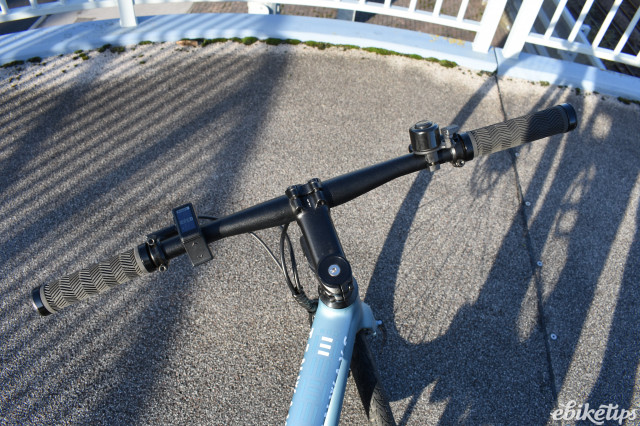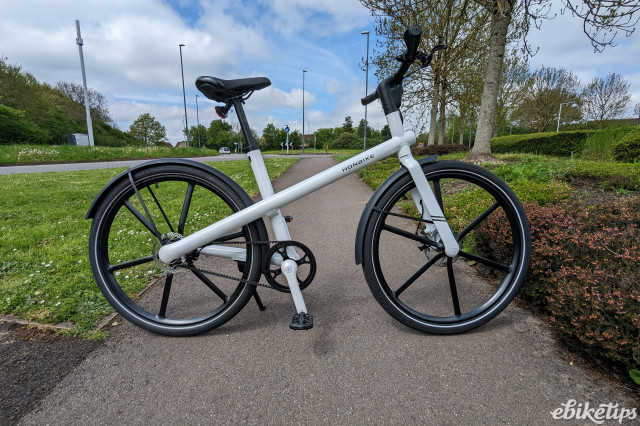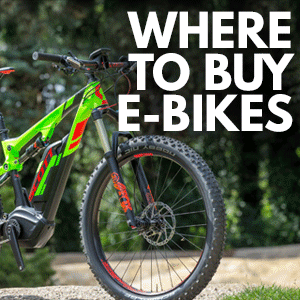Review: Tenways CGO600
Overview
- Small but wonderfully performing motor
- Lightweight
- Single speed belt drive means low maintenance
- Small capacity battery
- Battery not removable from frame
Tenways are a relatively new brand and although the Mivice motor on their debut urban-styled, single-speed belt drive model hails from Asia, this is a slick, single-speed city e-bike very much in the modern European style. (Yes, we are thinking of you Ampler, Cowboy and Van Moof). It's also super competitive on price.
The company have already successfully crowdfunded, with the first European-spec 15.5mph bikes assembled in their Lithuanian factory and shipped to their Dutch warehouse ready to send onto customers. (There is also a US spec version shipped directly to the Americas). Tenways are, for now, a direct to consumer brand which means you will be dealing directly with them for any after sales queries or problems, but they may establish a dealer network in the UK in the fullness of time.
So much for the background - just what is the CGO600 and is it any good?
First impressions
This is undoubtedly a very slick-looking bike with a lightweight alloy frame that has plenty of super smooth welds and a rear hub motor with such a small diameter that it's no different looking to an eight speed hub gear. The 250Wh battery lives inside the downtube and stays there - it isn't designed to be removed on a daily basis, although there is a removable cover at the bottom that will presumably allow servicing and replacement. Tenways say the battery features Samsung cells. There are two frame sizes (medium and large) currently on offer and Tenways say an XL size will be added to provide options for a suggested height range of 1.65m to 1.95m.
The svelte appearance is continued with frame-routed electrical and brake cabling from the handlebars to the rear of the bike and a Gates Carbon Drive (a high quality belt drive). There's a very discreet combined display and push button unit next to your left thumb and an LED front light. CST branded 40-622 size tyres feature puncture protection and look about the right size for speed and a bit of comfort on less than perfectly surfaced urban roads. They are fitted to double wall alloy rims with reinforced spoke nipple holes. Mineral Spark branded hydraulic disc brakes complete the package.
The overall effect is a bike that you have to look fairly carefully at to realise it's electric. When out testing it with another e-bike rider, a passerby jokingly said: "That one's cheating, that is," pointing at my friend's bike - clearly not realising the Tenways was electric too. Electric detectability may or may not matter, depending on the rider, but the CGO600 is a sporty and sleek-looking machine either way.
Performance
About the only component name on this e-bike I was familiar with was the CDX Gates Carbon belt drive and I was particularly curious how the Mivice M070 motor would perform when allied with a double sided torque sensor (i.e. one that makes the motor respond to pressure from both sides of the crank).
I needn't have worried about its unfamiliar provenance; there's just the right amount of power at each of the three preset power levels and it's all perfectly married to the torque sensor. Level one gives a small but perfectly proportionate surge of power, so that if I rode pretty energetically I could crest moderate hills whilst getting a decent workout. Levels two and three give nicely graduated increases in power with the latter providing a real surge that is useful up steeper hills if you are starting to get jelly legs.
All in all it's one of the most bike-like systems I have tried, so responsive is the motor to your pedal strokes. The harder you push, the more power you get. It really is a very sophisticated feeling ride.
I wasn't surprised it returned very impressive range figures from the modestly-sized 250Wh battery. It managed a 24-mile return trip into Leeds with plenty of stop-start riding over moderately rolling terrain, mainly in level one, using an estimated 185Wh of the battery. This suggests a total range of over 30 miles in such conditions. On a much hillier 16-mile ride with plenty of 10%+ gradients and a 15kg load, and using levels two and three more regularly, 20 miles seemed like a more realistic range.
It was one of the quickest small hub-motored e-bikes we've tried up our 1.25-mile constant climb test - though it failed to get up our short and sharp ultra-steep climb. (Many single speeds with high gearing and a small motor do, so no great surprises there.) In general it's a bike that rewards a bit more human input than many other designs, as is the case with most single-speeds.
It's nice to ride without the power on too and the belt drive doesn't feel too different to a regular chain drive. The 16.11kg weight also helps in this regard and also if you need to carry it up steps. After weighing various motor wheels, I would say it's a pretty light motor but not ultralight. The rear wheel when removed weighed 4.19kg as against 5.39kg for the apparently more powerful Bafang motor on aVolt London and 4.04kg for a Swytch motor wheel with similar size rim and disc brake. These are not direct comparisons as there are obviously differences in all the other component parts of a motor wheel, but it's a useful guide. Mivice's own website states the motor on its own weighs 1.7kg which, if true, would put it in the impressively light class. Whatever the exact weight of the motor itself, it's nicely chosen in terms of power and weight for this kind of commuting e-bike.
The hardwired LED front light gives good visibility at night, even in unlit conditions and it also has light bars on the side, so other traffic can see it from side-on - a nice safety feature.
There was an occasional error message which, curiously, seemed to appear once the bike was stopped, but turning it off and on did the trick and this only happened a couple of times. You might count the integrated battery as a downside if you can't take the bike indoors to charge it, but overall it's a very impressive performer.
Accessories and maintenance
It's easy to add most 'extras' onto the CGO600. I fitted a collection of bits and pieces laying about my bike shed, including a lovely Pletscher kickstand, highly adjustable alloy pannier rack, clip-on rear light and mudguards. The total weight after fitting was 17.65kg - pretty respectable for a fully equipped e-bike.
You can also use the Tenways app and it proved easy for me to download and pair with the bike. Unless you want to keep a record of journeys with lengths, average speeds etc, it doesn't add that much extra to the usual stats you find on the small handlebar display, but Tenways say it will be developed in future.
Belt drives have a claimed life of tens of thousands miles so you shouldn't need to replace it for a very long time. (The frame itself is also 'splittable' which allows you to fit a new belt - which isn't always the case with belt drive bikes.) You might need to remove the rear wheel of course and that's done easily enough by just slackening off the axle nuts. To get the belt back to its correct tension, there are small allen screws built into the frame's rear dropouts which make the process pretty straightforward.
The hydraulic disc brakes should also be low maintenance. Although Mineral Spark is not a name I was previously familiar with, they performed very well once I had changed the ineffective front pads (which were possibly contaminated with oil or similar as the bike had come from a previous test rider).
How does it compare?
Only a few years ago single-speed e-bikes were a rarity, but now there's a pretty good choice on offer. However, the Tenways CGO600 is pretty much in a class of its own in terms of price for a torque-sensing belt drive machine - and an excellently performing one at that.
Probably nearest in terms of price and spec is the Pure Flux One which we liked, albeit with a couple of reservations. Despite the lower price, that bike lacks the sophisticated power delivery and fuel economy of the Tenways. The price of the Tenways actually fluctuated during the time of the test from £1,331 to £1,339 so it's probably tied to a particular exchange rate - but both figures represent pretty good value.
If you want more power and the ability to climb even steeper hills, plus a bigger battery than the Tenways can manage, the Volt London is a good choice - but it comes at a cost. For really hilly country, a multi-geared e-bike is a better bet anyway.
There's a host of pricier offerings, some with additional high tech features, like the Cowboy 4, Ampler Curt and various offerings from Schindelhauer and Coboc. However, Tenways sticks to the essentials of the riding experience and does it admirably and at a great price.

































